Tropical storm Michael slammed into the lower Shore late Thursday packing Cat 1 hurricane statistics. Michael generated winds that were measured at the Chesapeake Bay Bridge Tunnel with gusts of 77 mph at 1:00 a.m. Friday (other gusts were reported close to 90mph). The bridge was closed most of the night. High winds in the morning led to more closings between 6 and 7 am.
Falling trees and branches created power outages all up and down the Shore.
A&N Electric Cooperative said that nearly 4000 members were without power, including large swaths of Cape Charles. Crews worked furiously through the night, reducing that number to just under 2000 by the morning.
Governor Ralph Northam declared a state of emergency in order to mobilize resources, help Virginia mitigate any damage, and to streamline the process that the Commonwealth uses to provide assistance to other states through the Emergency Management Assistance Compact. State agencies are working closely with localities to identify any needs and to provide resources.
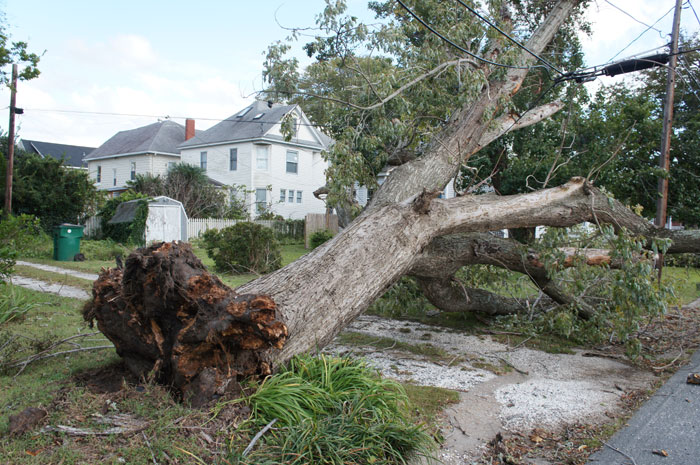
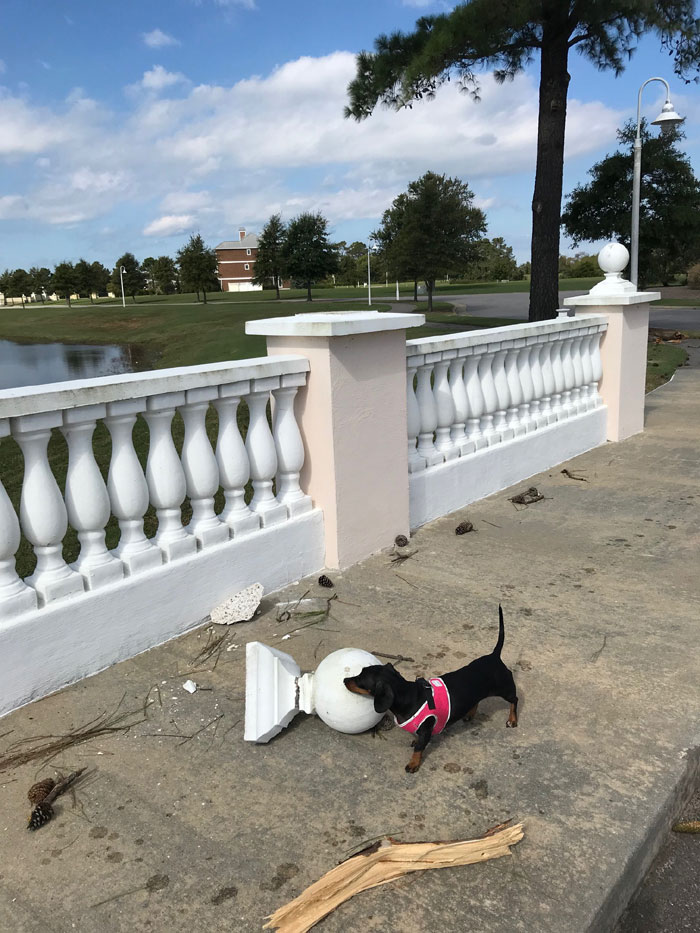
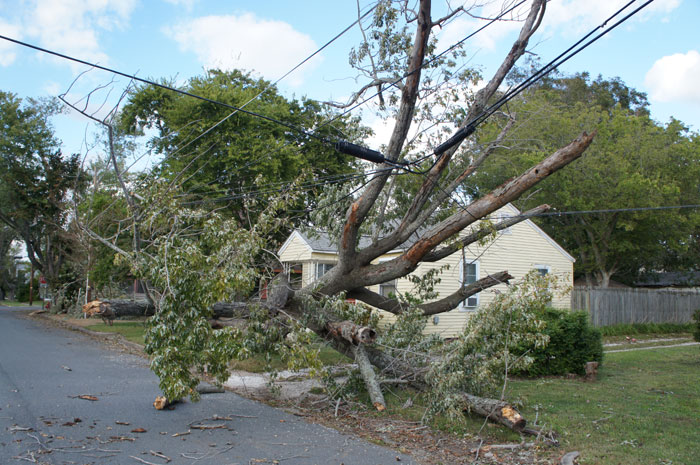
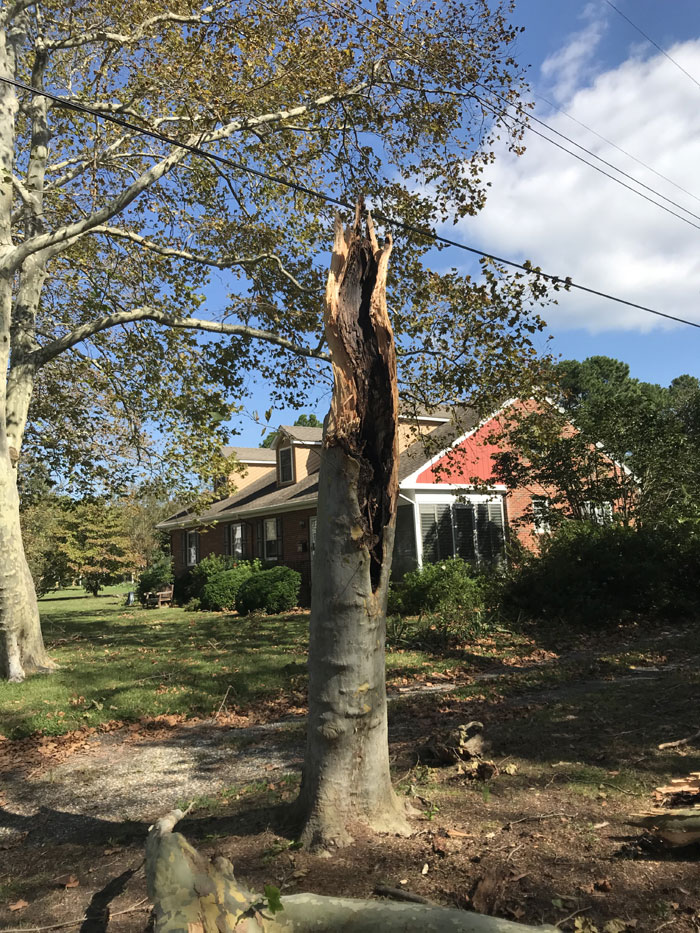


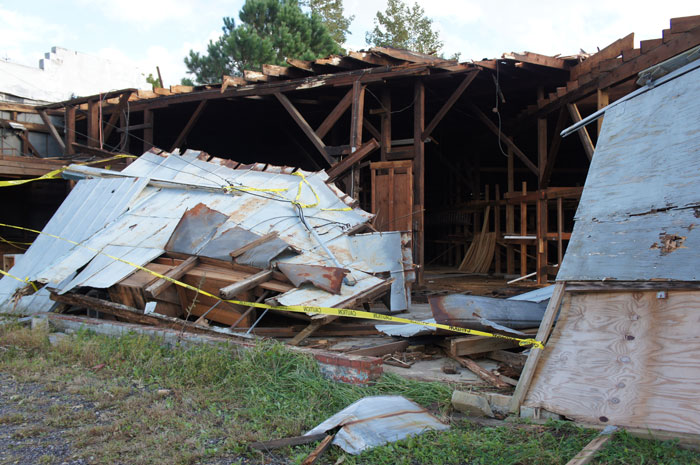
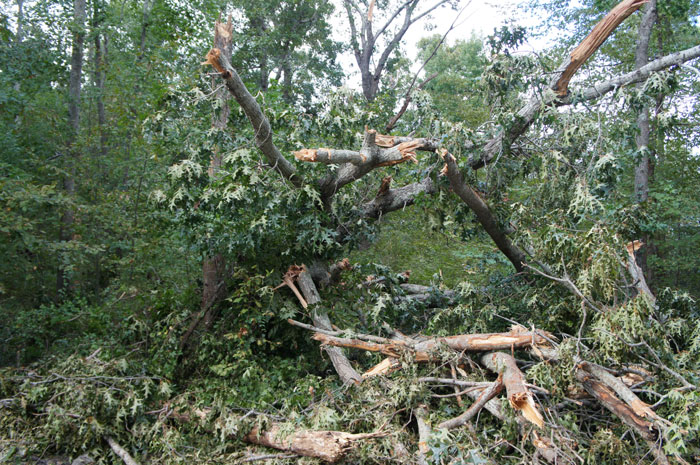
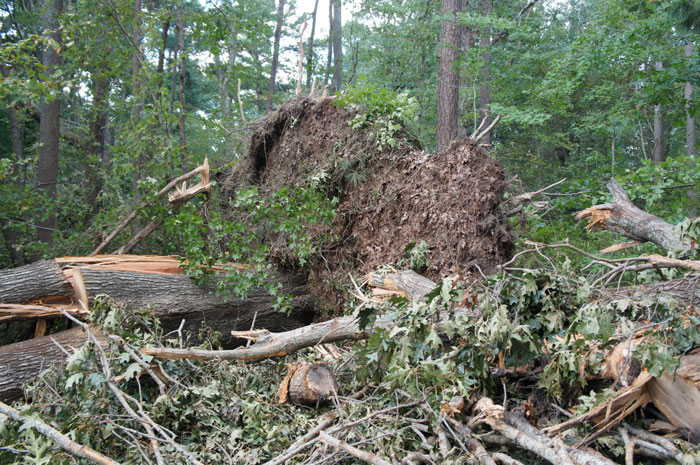
Discover more from CAPE CHARLES MIRROR
Subscribe to get the latest posts sent to your email.
Hope everyone was safe! Property can be replaced. Thank you for sharing the pictures and article.
Thank God could have been much worse Great Job ANEC
Well Done to the ANEC Linemen that worked through the night in dangerous conditions .
To the citizens that allowed dead trees to stand next to power lines for years , I don’t know what to say . Maybe , ” How could you ? ”
It does not take an expert in Root Cause Analysis to look at the pictures provided by The Mirror to see the obvious path to storm damage mitigation .
How many more times are the linemen going to have to risk life or limb because of preventable accidents ?
It is normal practice in high risk industries , like nuclear power plants , to ” walk the plant ” at the start of every shift to eliminate potential hazzards . It has been very effective over the years .
I am sure that many power outages and human suffering could be avoided by walking the line and taking action to remove hazards to the power distribution system .
Since DJT is now responsible for hurricanes as per the climate crisis folks, its only fair he gets credit for the uptick in tree removal services’ employment figures.
RNC slogan for November 2018’s elections –
Making America Great Again, one natural disaster at a time.
Has a nice ring.
Donald Trump might think himself the master of the hurricane or maker of the hurricane, but truth be told, hurricanes have been around a lot longer than Trump, as the people of Virginia especially should know, given that the Hurricane of September 6, 1667 (The “dreadful hurricane of 1667”) is considered one of the most severe hurricanes to ever strike Virginia.
As grade school history tells us, this thanks to a website on Seventeenth Century Virginia Hurricanes, on the first, this same storm was reported in the Lesser Antilles.
The hurricane devastated St. Christopher as no other storm had done before.
The “great storm” went on to strike the northern Outer Banks of North Carolina and southeastern Virginia.
The wind turned from the northeast to due south and finally to the west, which suggested a track similar to the August 1933 hurricane, a benchmark storm for the Hampton Roads area in the 20th century.
This 1667 hurricane lasted about 24 hours and was accompanied by very violent winds and tides.
Approximately 10,000 houses were blown over.
Area crops (including corn and tobacco) were beat into the ground.
Many cattle drowned in area rivers and bays by the twelve foot storm surge and “many people had to flee.”
The foundations of the fort at Point Comfort were swept into the river.
A graveyard of the First Lynnhaven parish church tumbled into the waters.
Twelve days of rain followed this storm across Virginia.
This system is blamed for the widening of the Lynnhaven river.
Ships in regional rivers sustained great damage.
Several accounts attest to the fury of this great storm.
The first was published in London from Strange News from Virginia.
“Sir having this opportunity, I cannot but acquaint you with the relation of a very strange tempest which hath been in these parts (with us called a hurricane) which had began August 27th (September 6th Julian calendar) and continued with such violence, that it overturned many houses, burying in the ruines much goods and many people, beating to the ground such as were any wayes employed in the fields, blowing many cattle that were near the sea or rivers, into them., whereby unknown numbers have perished, to the great afflication of all people, few having escaped who have not suffered in their persons or estates, much corn was blown away, and great quantities of tobacco have been lost, to the great damage of many, and utter undoing of others.”
“Neither did it end here, but the trees were torn up by the roots, and in many places whole woods blown down so that they cannot go from plantation to plantation.”
“The sea (by the violence of the wind) swelled twelve feet above its usual height drowning the whole country before it, with many of the inhabitants, their cattle and goods, the rest being forced to save themselves in the mountains nearest adjoining, while they were forced to remain many days together in great want.”
“The tempest, for the time, was so furious, that it hath made a general desolation, overturning many plantations, so that there was nothing that could stand its fury.”
end quotes
The following is a letter from Secretary Thomas Ludwill to Lord Berkeley on the subject of this “dreadful hurry cane” of September 6th gives added information about the cyclone.
“Jamestown Colony – this poore country is now reduced to a very miserable condition by a continental course of misfortune.”
“On the 27th of August followed the most dreadful Hurry Cane that ever the Colony (Jamestown) groaned under.”
“It lasted 24 hours, began at North East and went around northerly till it came to west and so it came to Southeast where it ceased.”
“It was accompanied with a most violent rain but no thunder.”
“The night of it was the most dismal time I ever knew or heard of, for the wind and rain raised so confused a noise, mixed with the continued cracks of failing houses…..”
“The waves were impetuously beaten against the shores and by that violence forced and as it were crowded into all creeks, rivers and bays to that prodigious height that it hazarded the drowning of many people who lived not in sight of the rivers, yet were then forced to climb to the top of their houses to keep themselves above water.”
“The waves carried all the foundations of the Fort at Point Comfort into the river and most of furnished and garrison with it…..but then morning came and the sun risen it would have comforted us after such a night, had it not lighted to us the ruins of our plantations, of which I think not one escaped.”
“The nearest computation is at least 10,000 houses blown down, all the Indian grain laid flat on the ground, all the tobacco in the fields torn to pieces and most of that which was in the houses perished with them.”
“The fences about the corn fields were either blown down or beaten to the ground by trees which fell upon them.”
end quotes
The storm passed inland northeast of Jamestown into northern Virginia.
A severe storm in Manhattan on the 8th was most likely a continuation of this cyclone, as it recurved northeast.
Another hurricane may have passed very close to the Virginia coastline on September 10th since the “dreadful hurricane of 1667” was accompanied by twelve days and nights of rain.
A second storm passing close to the Virginia coast would have extended the period of rain.